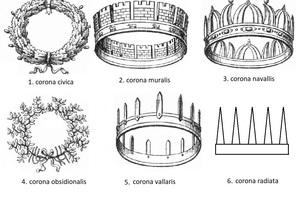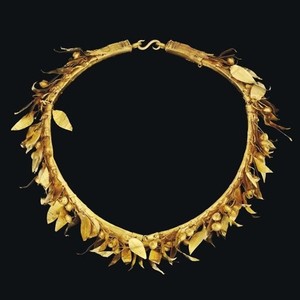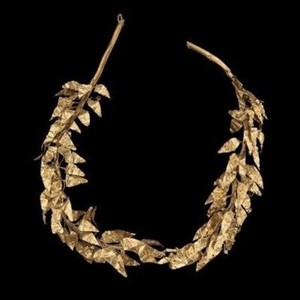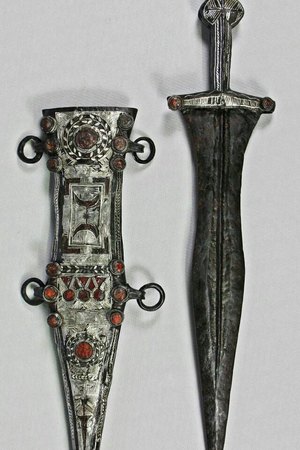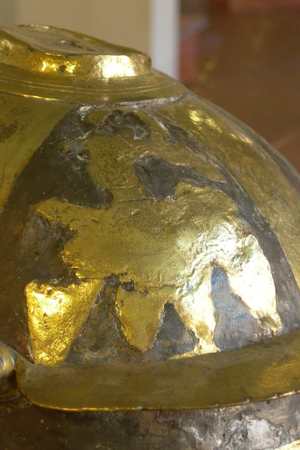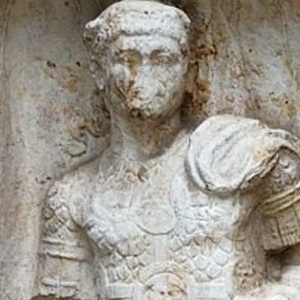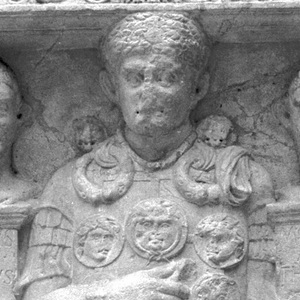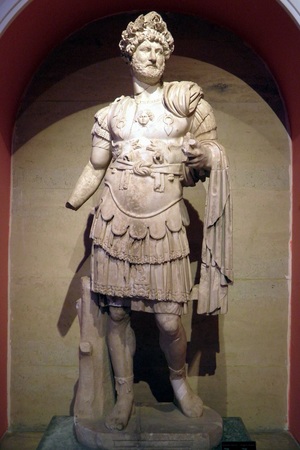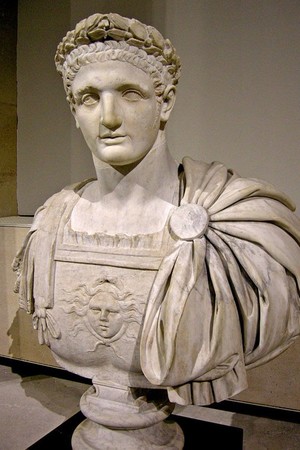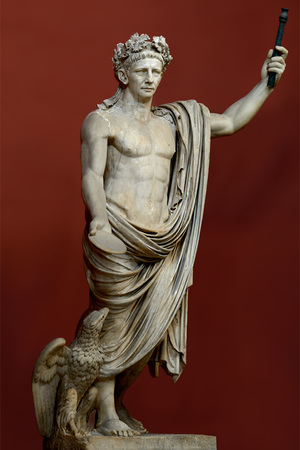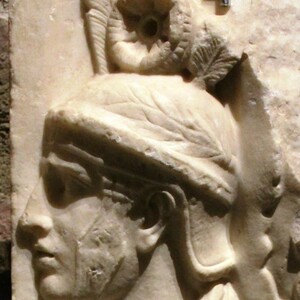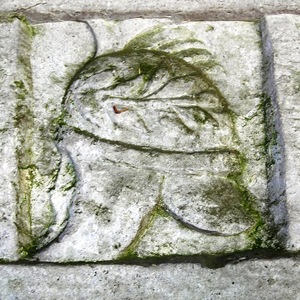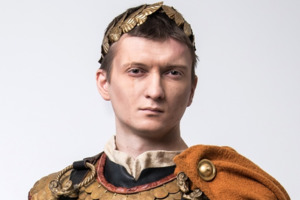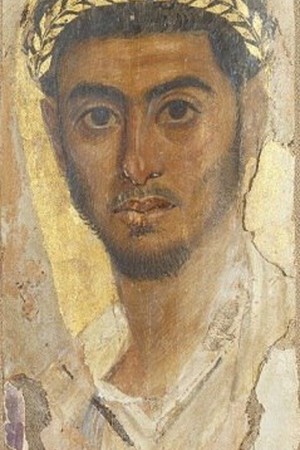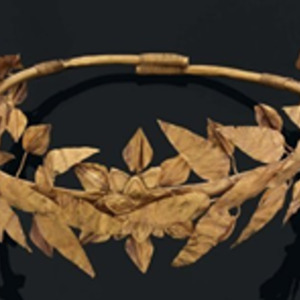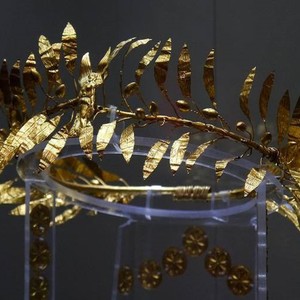Crown
Crown (from Latin corona, meaning "wreath, crown") is a headgear that serves as a symbol of power, victory, success, and glory in the ancient world.
There were at least six types of crowns:
- corona civica
- corona muralis
- corona navallis
- corona obsidionalis
- corona vallaris
- corona radiata
The most popular was the civic crown (Latin corona civica) – the laurel wreath. This ancient symbol of glory, victory, or peace was often used as an honorary decoration among distinguished warriors, commanders, or statesmen.
The ancient Greek myth of Daphne and Apollo tells us how the laurel became one of Apollo's sacred symbols. This provides a basis for drawing an analogy between the symbolism of the laurel and the areas of patronage associated with this god – the Sun (possibly why the symbol is depicted simultaneously with the symbol of Sol), art, and predicting the future. In the Olympic Games, the laurel wreath was awarded to the victor, and it was also given to the "favorites of Apollo" – the poets. The association between Apollo and the laurel also explains the attribution of prophetic properties to the laurel – it was believed that a knowledgeable priest, using it, could foretell the future. There was a belief that the laurel protected against lightning strikes. Being an evergreen plant, the laurel was also a symbol of immortality. In the military realm, it represented victory, war itself, and, of course, fame, which is why it was used during triumphs.
The laurel has firmly established itself in modern culture as a symbol. For example, the word "laureate" (Latin laureatus) means "crowned with laurel."
Laurel branches are often used as a symbolic representation on pugios, gladii, helmets, and other equipment of the roman army and gladiators. There are variations with an eagle holding the wreath in its beak. Sometimes multiple wreaths were depicted on a single item. Additionally, relief sculptures sometimes depicted a wreath separately, without the owner.
Military personnel and Roman nobility often adorned themselves with wreaths: centurions, legates, senators, emperors, athletes, aristocrats, and many others. They wore them during parades, triumphs, official receptions, and especially to display a brilliant victory in battle.
Both wreaths made of real laurel branches and those cast in gold were used.
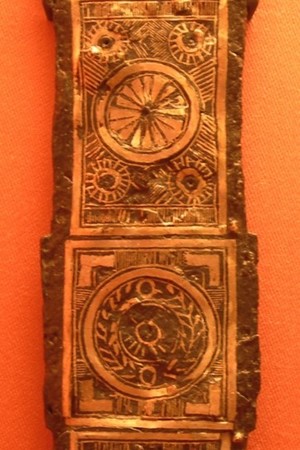 Scabbard from pugio with a wreath depicted. Carnuntum fortress. Archäologisches Museum Carnuntinum - Bad Deutsch-Altenburg-AU). Type II. 1st century AD
Scabbard from pugio with a wreath depicted. Carnuntum fortress. Archäologisches Museum Carnuntinum - Bad Deutsch-Altenburg-AU). Type II. 1st century ADAmong Roman military personnel, the wreath was common as a detail of the parade attire of centurions. There are several reliefs depicting centurions wearing wreaths. Sometimes, a medallion is placed in the center, and laurel branches are tied with a ribbon at the back.
Emperors, as well as other high-ranking political and military officials, were often depicted wearing wreaths. Unlike centurion wreaths, imperial wreaths were significantly more detailed, lavish, and pompous.
It is worth noting the depiction of wreaths on top of helmets. They could be either an integral part of the decoration of the protective gear itself or worn on top of them. The first option appears more likely due to the textured representations in pictorial sources.
Reenactment
For reenactment, it is recommended to make a wreath from embossed leaves attached to a metal hoop. Brass can be used as a material to save costs since a golden wreath would be excessively expensive. Gilding is welcomed for added grandeur. An authentic option would be a wreath made of live laurel. The laurel wreath would look most organic on a high military rank.
Related topics
Centurion, Legate, Gladiator, Pugio, Gladius, Roman Army helmets

 Gallery
Gallery






